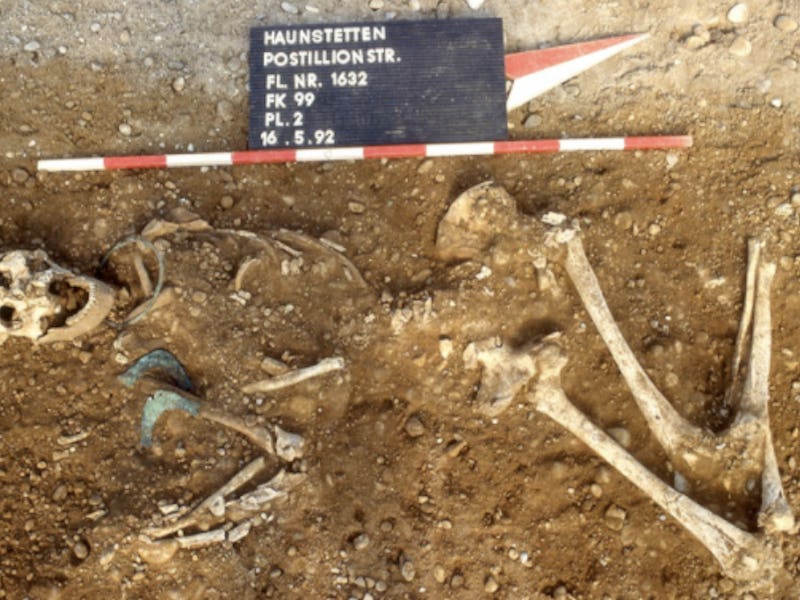Study Reveals Bronze Age Women Traveled Far While Men Stayed Home
4,000 years ago, mobile women were key to cultural exchange in Europe.

When we think of ancient peoples traveling to new and unknown lands, it’s easy to imagine groups of men roaming from settlement to settlement, thousands of years ago. New findings now suggest that it may have actually been women doing a lot of the legwork, at least in western Europe, during the Stone and Bronze Age. It also suggests that these women would have been largely responsible for the exchange of cultural objects and ideas throughout this period.
Researchers at the Ludwig Maximilian University of Munich have discovered that 4,000 years ago, the majority of women living in a region of Austria were actually not locally born, but rather from Bohemia or Central Germany. Over 800 years, from the Neolithic to the Early Bronze Age, women appear to have migrated to new surroundings in substantial numbers, while men stayed put.
The findings were published on Monday the scientific journal Proceedings of the National Academy of Sciences.
“I think there’s kind of a perception or different hypotheses in archeology that there’s kind of this movement of men that came, and married the local women and possibly killed the local men,” Dr. Alissa Mittnik, one of the principal researchers of the study, tells Inverse. “Maybe that did happen at some point, but we don’t see that in our data.”
Some 4,000 years ago, European women traveled far from their home villages to start their families, bringing with them new cultural objects and ideas.
Researchers examined the remains of 84 individuals in the Lechtal, a valley region in Austria where ancient settlements once existed. Using genetic and isotope analyses, as well as archeological evaluations, of people buried between 2500 and 1650 BC, the researchers concluded that the majority of the women buried there were not native to the region.
However, these foreign women were given the same burial treatment as the native population, implying that they were very much incorporated into the local society.
Looking at the isotopes in the molars of ancient individuals, Mittnik said they could even see at what age these women had moved. The third molars — that form around 16 or 17 years of age — still had a non-local signals, meaning that these women migrated to new homes when they were already adults. “This really looks like they were moving for marriage, not for servitude or something like that,” she says.
Mittnik says she was surprised by the amount of non-local women that she discovered at the site. “We can say that over 60 percent of them are non-local, but that’s a conservative count (More) of them could be non-local but we just don’t see it from their isotope signal.
What’s more, their lineages appeared to be from a diverse array of regions, implying a rather individualistic migration, as opposed to large groups as one might assume.
“It seems that this patrilocal marriage system was so pronounced and part of their lives, it really surprised me actually,” Mittnik says.
She says that men could have gone to foreign settlements to find their brides, but either way, the findings imply that women’s movement may have been largely responsible for cultural exchange over this period. Mittnik says there may have been a marriage network in place throughout parts of Europe, and that contact between different communities would have been largely established through these mobile women.
Mittnik says the early use of metal falls into the late Stone Age, and then of course the use of bronze and more sophisticated tools began in the Bronze Age. It’s very possible that materials and technology were brought into different communities by ancient traveling women. “In the sites that we were studying, we see artifacts that look like they’re from a more northern region,” Mittnik says.
If you’re interested in more of Inverse’s science coverage, check out this video on metallic hydrogen.